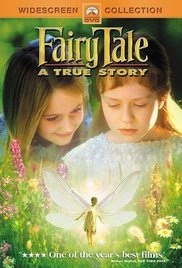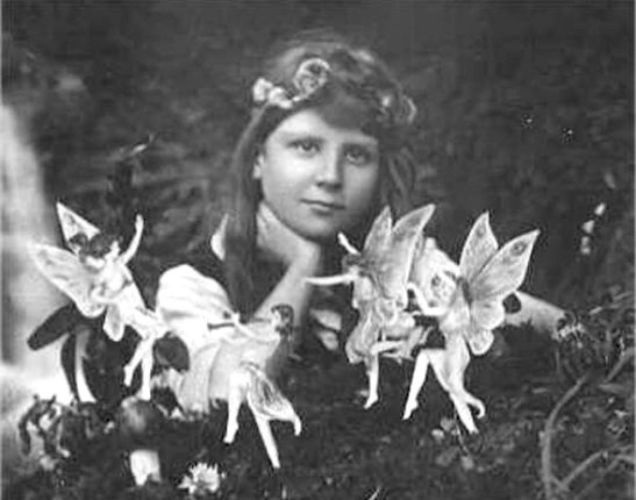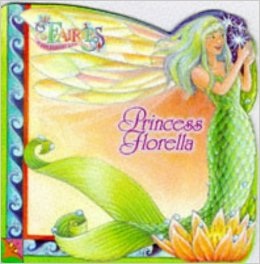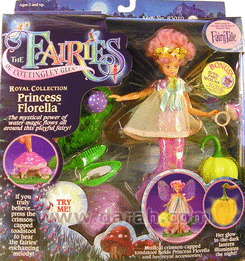|
Fairy Tale: A True Story is available on Netflix now. It’s based on the story of the Cottingley Fairies, which I’m fascinated by, so I gave it a watch, skipping through some scenes because it was late. I enjoyed it more than I expected. It is indeed based on a true story. Starting in 1917, two cousins in Cottingley, England, named Frances Griffiths and Elsie Wright, produced photographs of themselves with what appeared to be real, live fairies. It’s strange to think that these photographs convinced so many. Even with the camera quality, their gnomes and sprites look flat and sharp-edged, like paper cutouts . . . which, of course, they were. Elsie’s father picked up on this, but somehow the “proof” of real fairies became huge news. This was mainly thanks to one of their most prominent champions, Sir Arthur Conan Doyle. Yes, the creator of Sherlock Holmes was totally on board with it. It wasn’t until the 1980s that Frances and Elsie admitted that it had all been faked. The delicate, dancing figures were copied from picture books onto cardboard and supported with hatpins. They still maintained, however, that they had really seen fairies. The film, which came out in 1997, wholly embraces the idea of the real live fairies. They are constantly flittering around. However, this makes the film somewhat disturbing on another note, because so much of it is about faith and belief in things unseen, in a higher power. It opens with a performance of Peter Pan, with the lead character crying, "Clap if you believe in fairies!" The audience of children applauds and cheers. One character is having a crisis of faith and searching for hope after her son's death; characters talk about belief again and again. And then it all turns out to be real. Yay!! But the “true story” it’s based on was a hoax. The filmmakers most definitely knew that it was a hoax. The end result is that the film feels like a mockery. That said, we never actually see the girls take a photo. And in one of the final scenes of the movie, juxtaposed with two other cases revealing hoaxes, a reporter discovers the paper fairies on their hatpins, in exactly the poses from the photo. However, the scene then turns around, and the supernatural takes back over. A ghost appears and frightens him away. The movie later ends with fairies filling the family's house and even the skeptical father finally being convinced. Perhaps the filmmakers were trying to portray the girls in the most positive light. Frances and Elsie always said, even after confessing to the hoax, that they really had seen fairies. Still, I don’t think it’s right to market this to children as "A True Story," with taglines like "Believe!" because it cheapens the truth. It's like saying "You can believe in this thing! Well, in this case, the proof turned out to be a bald-faced lie, but you should still believe in the thing because it's a happy thing that brings you joy!" And the fairies feel like a marketing ploy. That's right - there were books and a doll line. "Fairies of Cottingley Glen." But at least it was well-researched. Sir Arthur Conan Doyle was a spiritualist who by all accounts wanted to believe. His father, Charles Altamont Doyle, was an alcoholic who suffered from epilepsy and depression, and spent the latter part of his life in a mental institution. While there, he filled sketchbooks with elaborate, fantastical artwork of elves and fairies. The movie touches briefly on this and it makes Doyle's motivations much more understandable. There was one scene that I actually stopped and rewound because the girls are walking through the woods calling the names of the fairies, and they’re all names from real folklore. A cast list reveals the names of even more fairies.
I've read about the Cottingley Fairies before, on the Internet and in The Fairy Ring: Or Elsie and Frances Fool the World, by Mary Losure. This book is written for children, but is a great read and incredibly well-researched. However, like the movie, it still clings to the idea that the girls really did see fairies, and they faked the photos because . . . um . . . they saw fairies.
Back to the movie. There’s beautiful scenery, the effects have aged surprisingly well, and I found myself enjoying it overall. Still, I was still bothered by that whole faith/fakery complex, and also the feeling that the fairies were real so that the moviemakers could sell toys. I would have much preferred to see the movie simply reveal that yes, the fairies were faked, and leave it at that, with maybe a faint hint at real supernatural events rather than full-blown "FAIRIES ARE REAL AND THEY'RE IN YOUR HOUSE." Even better, it'd be nice to see the girls actually taking the photos. (I must say, I never expected to see Dame Habetrot or the Shellycoat marketed as cute, big-eyed Barbies with fluorescent hair. The Shellycoat!) Text copyright © Writing in Margins, All Rights Reserved
1 Comment
I'm fascinated by the Cottingley Fairies and the whole hoax too! The idea of trick photography is actually pretty impressive for girls so young, and I'm sure they never expected their little prank to be known worldwide? I would imagine they got too scared to tell the truth once it started spreading.
Reply
Leave a Reply. |
About
Researching folktales and fairies, with a focus on common tale types. Archives
July 2024
Categories
All
|
Writing in Margins




 RSS Feed
RSS Feed
